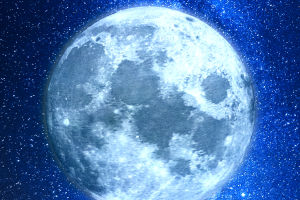In the solar system's 4.5 billion years of history, the Earth has never ceased its orbit around the Sun, continuously revolving in a cycle. However, Earth is not alone, as the Moon accompanies it.
The Moon, the largest in size and mass among Earth's many satellites, casts its bright light upon the Earth during full moons. The Moon shares an inseparable "connection" with life on Earth.
This is an intriguing question that invites brainstorming across various scientific aspects. Let's explore some factors that are relatively easy to conceive from a scientific perspective, while other factors might require more creative thinking.
Tidal weakening:
Tides, the periodic rise and fall of sea levels in coastal areas, are a natural phenomenon caused by the gravitational pull of the Moon and the Sun, with the Moon exerting a more significant influence. If tides were to weaken, it would significantly affect the survival and habits of coastal organisms, particularly intertidal zone species. It would also reduce the efficiency of tidal energy generation and impact the excitement of activities like surfing.
No more solar eclipses:
Whether it's partial, total, or annular, solar eclipses would cease to occur. Solar eclipses require three celestial bodies to align: the Sun, the Moon, and the Earth. When the Moon moves between the Sun and Earth, if it perfectly obscures the Sun, a total solar eclipse occurs (when the apparent diameter of the Moon is more significant than that of the Sun); partial solar eclipses occur when only a portion of the Sun is obscured;
Annular solar eclipses occur when a portion of the Sun is visible as a ring around the Moon. Total solar eclipses are spectacular celestial events, and their absence would be a significant loss for astronomy enthusiasts.
However, the night sky would no longer be influenced by moonlight. Clear night skies would be significantly darker in places without artificial light pollution, with stars shining much brighter, which should be good news for most astronomical observations.
In addition to tidal-related organisms, the Moon may influence many other biological behaviors on Earth, including some human behaviors (such as increased activity during full moons) and certain mental health conditions. Without the Moon, unpredictable changes could occur in these areas.
In the long term, the tilt of the Earth's axis (known as obliquity) would become unstable. The Moon stabilizes the Earth's axis, and its disappearance could lead to significant oscillations in the Earth's rotation axis, resulting in drastic climate changes. In extreme cases, the axis could become perpendicular to the ecliptic plane, resulting in the disappearance of seasons, with equal day and night lengths everywhere on Earth.
Subsequently, the Earth could gradually transition to a "tilted" rotation on the ecliptic plane (similar to Uranus), resulting in highly distinct seasons, with almost constant daylight during summers in one hemisphere and constant darkness during winters in the other.
Earth's rotation speed would be much faster if it had never had a moon since its inception. The length of a day would be much shorter, as the Moon's gravitational influence tends to slow down the Earth's rotation and lock its rotation and revolution together (similar to what has happened to Earth regarding the Moon).


